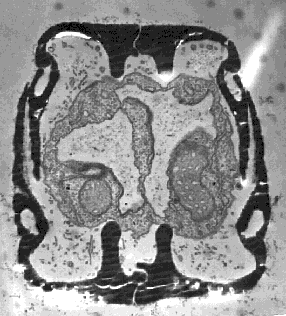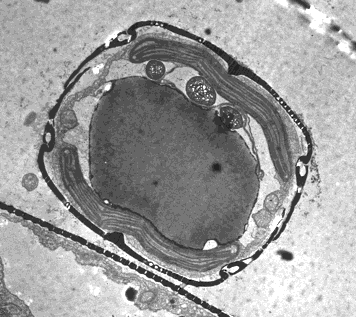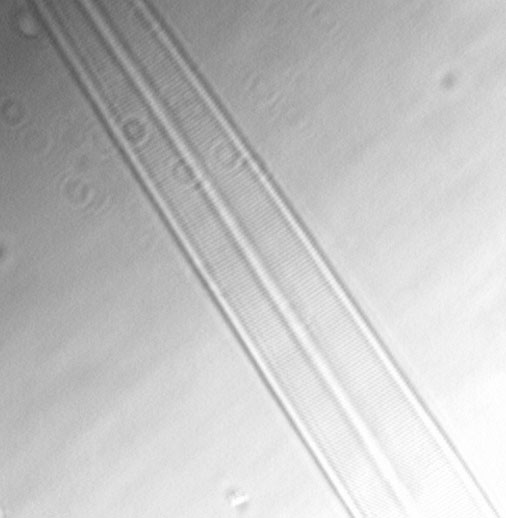
This is an unpublished transmission electron micrograph taken by E. F. Stoermer showing a cross section through a cell at the end. Visible here are the silica ribs which form the area where the raphe is present. Notice that these project into the cell and are not external structures. Cytoplasmic contents, mitochondria and cytoplasm are visible.
Notice also the chambers in the side walls (mantle) of each valve.

This is an unpublished transmission electron micrograph taken by E. F. Stoermer showing a cross section through the middle of a cell. Visible here are plastids, mitochondria and a lipid droplet. The chambers in the side walls (mantle) are present suggesting these structures run the length of the cell.
| 







